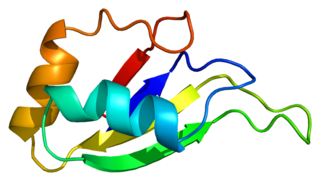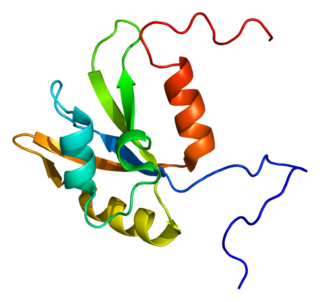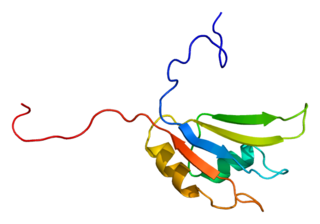
Heterogeneous nuclear ribonucleoproteins (hnRNPs) are complexes of RNA and protein present in the cell nucleus during gene transcription and subsequent post-transcriptional modification of the newly synthesized RNA (pre-mRNA). The presence of the proteins bound to a pre-mRNA molecule serves as a signal that the pre-mRNA is not yet fully processed and therefore not ready for export to the cytoplasm. [1] Since most mature RNA is exported from the nucleus relatively quickly, most RNA-binding protein in the nucleus exist as heterogeneous ribonucleoprotein particles. After splicing has occurred, the proteins remain bound to spliced introns and target them for degradation.
Contents
- Role in cell cycle and DNA damage
- BRCA1
- HER2
- p53
- Functions
- CD44 Regulation
- Telomeres
- Examples
- See also
- References
- Further reading
hnRNPs are also integral to the 40S subunit of the ribosome and therefore important for the translation of mRNA in the cytoplasm. [2] However, hnRNPs also have their own nuclear localization sequences (NLS) and are therefore found mainly in the nucleus. Though it is known that a few hnRNPs shuttle between the cytoplasm and nucleus, immunofluorescence microscopy with hnRNP-specific antibodies shows nucleoplasmic localization of these proteins with little staining in the nucleolus or cytoplasm. [3] This is likely because of its major role in binding to newly transcribed RNAs. High-resolution immunoelectron microscopy has shown that hnRNPs localize predominantly to the border regions of chromatin, where it has access to these nascent RNAs. [4]
The proteins involved in the hnRNP complexes are collectively known as heterogeneous ribonucleoproteins. They include protein K and polypyrimidine tract-binding protein (PTB), which is regulated by phosphorylation catalyzed by protein kinase A and is responsible for suppressing RNA splicing at a particular exon by blocking access of the spliceosome to the polypyrimidine tract. [5] : 326 hnRNPs are also responsible for strengthening and inhibiting splice sites by making such sites more or less accessible to the spliceosome. [6] Cooperative interactions between attached hnRNPs may encourage certain splicing combinations while inhibiting others. [7]














